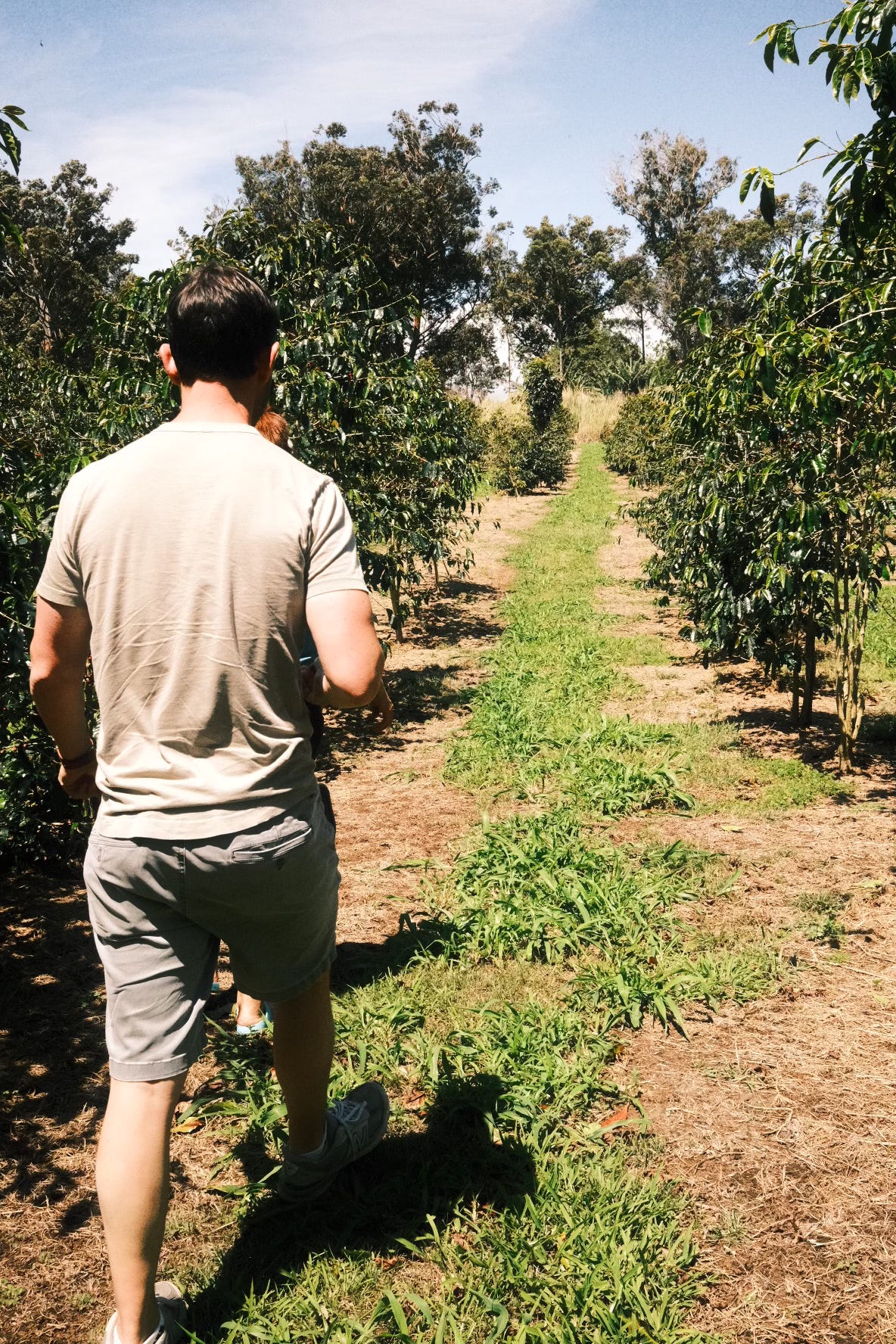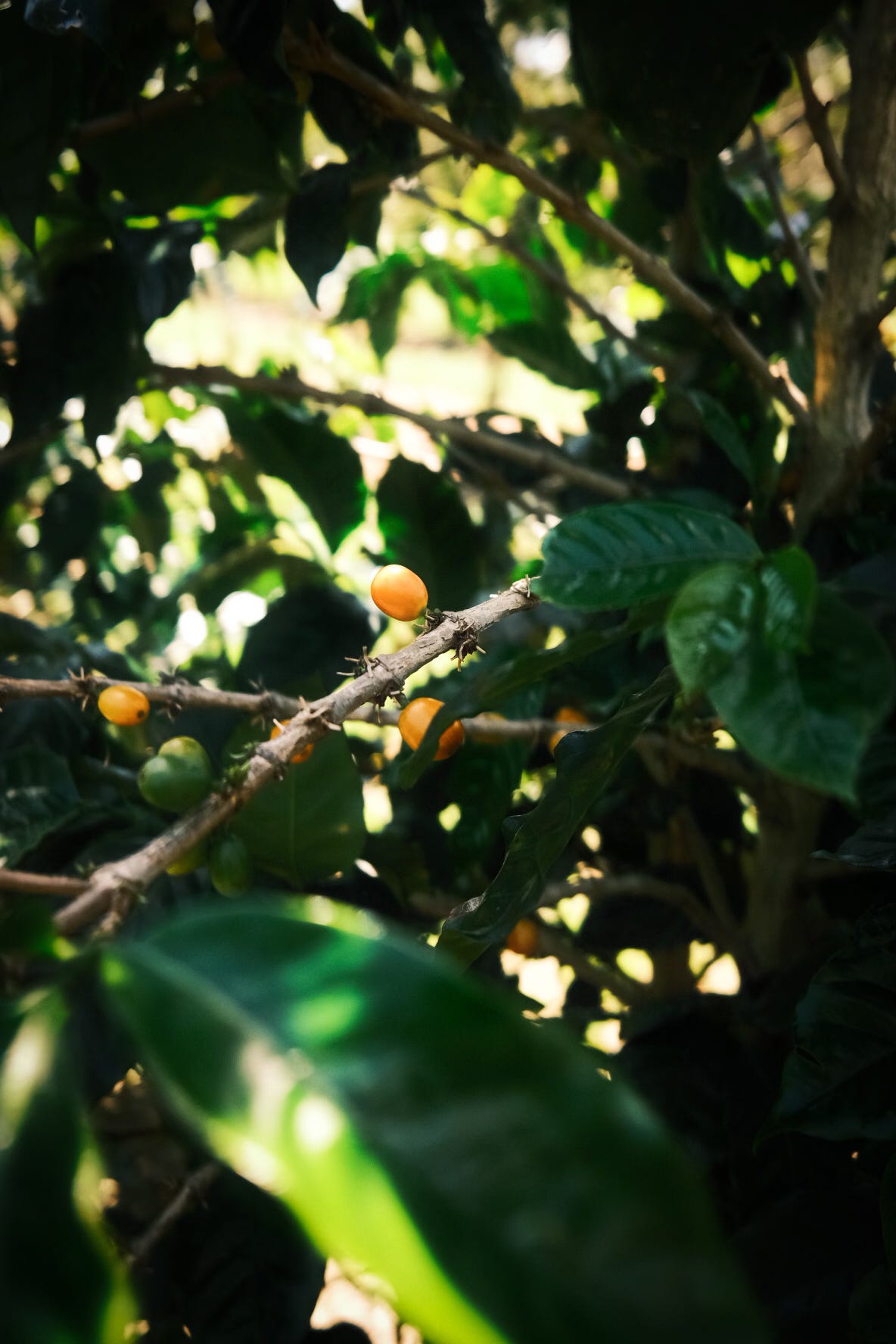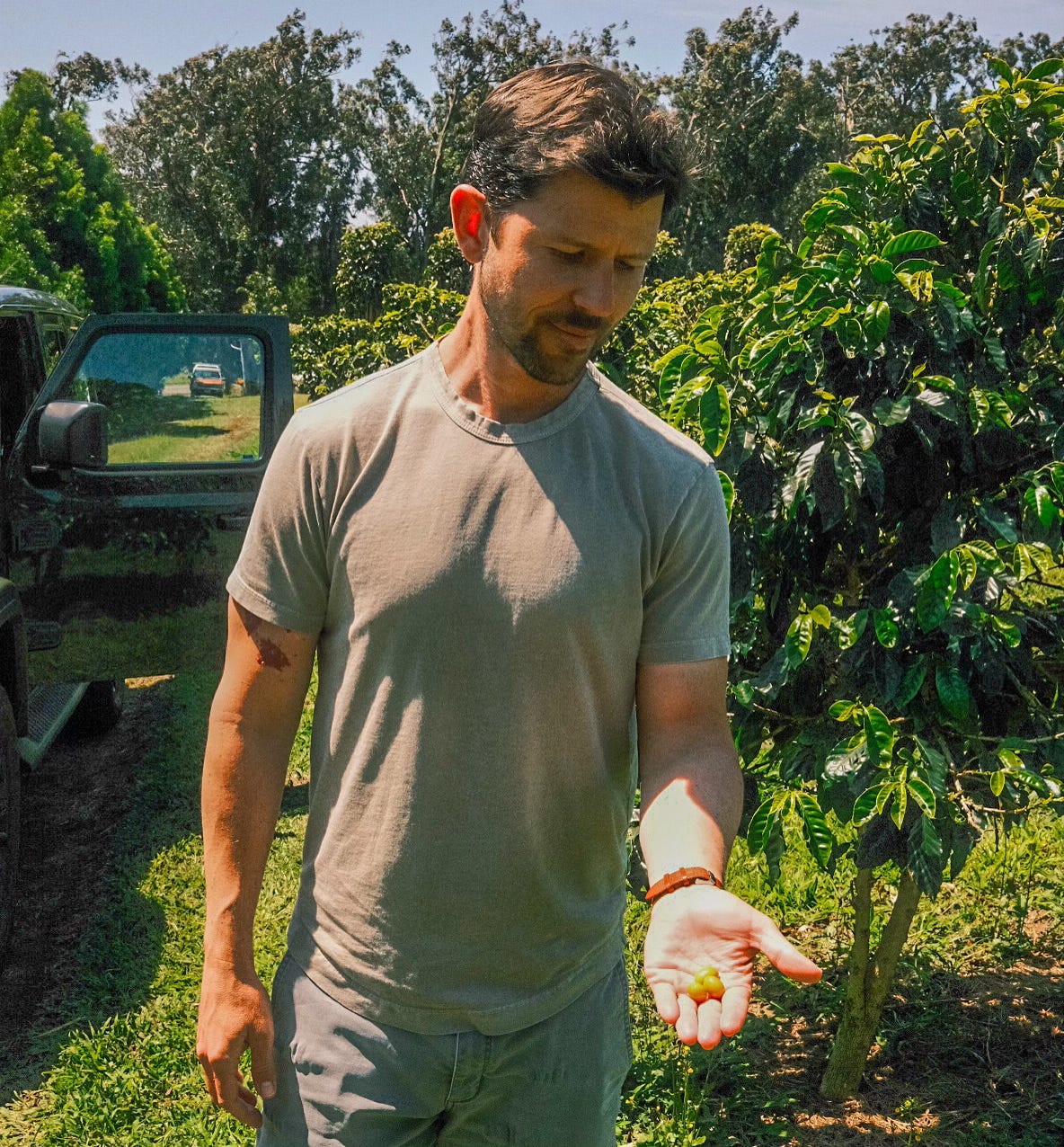This week, I announced a collaboration with Pull and Pour Coffee. Andrew—the wiz behind Pull and Pour—and I go way back. During the pandemic, I sent him a few samples of my coffees, which were so poorly packaged they may as well have arrived in a Ziplock bag with a piece of painter’s tape reading, “Caffeine Pebbles!” But he brewed them anyway, flipped for them, and started shining a spot on my little startup business. My Friend’s Coffee wouldn’t have grown the way it did if it weren’t for the help of online tastemakers, chief among them Andrew.
Over the past few years, I’ve done multiple Pull and Pour collaborations, but this one has me as jazzed as Ron Burgundy’s flute because it’s a Hawaiian coffee from one of my favorite producers on the island, Miranda Farms. I’ve got a serious soft spot for Hawaii. Unless you count Jason Mraz’s backyard, it’s the only growing area the US has, and it stands among the most misunderstood origins in the world. I’ve spoken at length about the history of Hawaiian coffee, but if I’ve got one talent, it’s heaping length onto lengthy diatribes, so I hope you’ll indulge some more pontificating.
Hawaiian coffee developed a reputation for excellence back in the mid-century. The fanfare owed to Kona, an island area with a knack for producing cups as smooth as a Barry White track. This was back during coffee’s first wave. Supermarket tins were all the rage, and brands like Foldger’s were Jedi-mind-tricking consumers into believing that pre-ground blends of Arabica, Robusta, and Chicory were hallmarks of sophistication. Against that backdrop, it’s no wonder Kona stood out. It was like a third-string NBA player joining a rec center pickup game.
As the decades passed, however, Kona became less exciting. Specialty consumers correctly pegged its coffees as mild, and though it sounds oxymoronic, there is such a thing as excessive mildness; one need only tune into a soft rock station to experience it. Plus, Kona lots are usually roasted dark enough to pass for the only Jelly Belly that kids work diligently to avoid—Black Licorice (there is, admittedly, an argument to include Buttered Popcorn in this category). Today, few coffee geeks would point to Hawaii as the epicenter of anything apart from overpriced, overrated tourist fare. The reality, though, is that Hawaiian coffee can be great. The island’s best producers are every bit as innovative as their counterparts across the globe. You just have to hunt to find them.
Ka’u is a tiny growing area just south of Kona. Getting there isn’t easy, so it doesn’t have many tourists. Kona’s got massive commercial farms, but not Ka’u. Its outfits tend to be family operations, with producers who are mindful of specialty trends. Miranda Farms is exactly that. It’s run by the Miranda family, a lovely clan who immigrated from El Salvador decades ago. Their farm has taken first place in Hawaii's statewide cupping competition multiple times, and they've got trees ranging from Yellow Caturra to Typica to Geisha and Red Catuai. Where I think the farm best shines is in its attention to process. The Pull and Pour release frames that well.
Even among coffee geeks, the Anoxic Water Pillow Technique (Water Pillow Process) is an esoteric method. It involves placing a plastic sheet over coffee cherries as they ferment, creating a barrier between the cherries and a “pillow” of water overhead. The water has a cooling effect on the fruit, minimizing oxygen and reducing unwanted flavors. There are loads of coffee processes these days, but I love this method because it doesn’t create funky tones or alter the coffee’s native notes. It’s more like a transparent flavor enhancer, amping up the elements that are already there. For the Pull and Pour release Miranda performed this process over six days with pure Red Catuai, and man did they do a bang-up job.
I’ve roasted enough Hawaiian coffees to have an idea of how they’ll behave in the drum. Typically, they require loads of up-front heat and minimal air adjustments. If you don’t apply adequate gas from the start, you risk long, stalled roasts and all the dull flavors that come from them. Miranda’s Water Pillow Red Catuai turned out to be no exception. It behaved quite a bit like the island’s most common coffee, washed Typica—resistant to momentum in the Dry Phase, but keen to hang onto it in Maillard. With certain experimental processes, detecting first crack is like trying to spot Waldo at an Italian Gondoliers convention. Not so with this coffee. The crack rang out like a Tommy Gun. As for Development, I decided to keep it in the 15% range with light color. My thinking had to do with the origin. Hawaiian coffee is almost always roasted too dark. Capping development at 15% while maintaining an easy hue means you get to encounter some lovely piquant tones and big, native flavors that are usually obscured by clumsy roasts. The goal with this collaboration was to create a type of Hawaiian coffee you don’t regularly encounter, and I’m pleased with the results.
Below are some pics from my most recent farm visit at Miranda. If you grabbed the Pull and Pour release, hopefully this post enhances your enjoyment. If you didn’t, hopefully, it didn’t bore you too much. Either way, thanks for reading. And don’t forget to subscribe and share this Substack. It’s a public service that I can’t maintain without the regular hits of dopamine that come from seeing my follower count rise.
.











👏👏. This is exciting. Hawaiian coffees will always have a soft spot for sentimental reasons. Excited to try this new take, because when I think of Hawaiian coffee (esp red catuai) I think of the best diner coffee with sweet red fruit notes—wonder how a less developed coffee will taste.